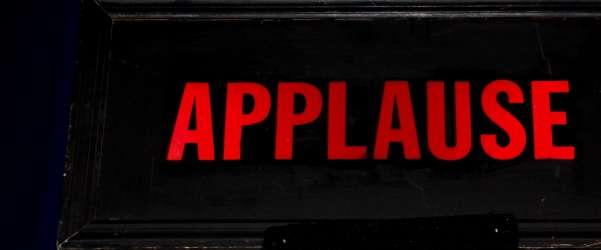So you’ve discovered the Holy Grail all life scientists in your field are searching for – congratulations! The dollar signs start appearing and you realize that there is a huge scope for commercializing your research. But before you can actually collect the rewards, you need to have been thinking tactically about how to protect your intellectual property (IP) with potential patents. How early you ask? Well, right from the first days of your project!
Who Owns Your Research?
You may think that this doesn’t concern you as a researcher, since all patents and intellectual property belong to the university or educational institution that you are working at anyway. While, your institution owns the patents, as they commissioned you to do the research and it takes place on their property and using their resources, IP is a different story. Check the IP policy at your university and you will find that as an inventor you still get a share of royalties from the commercialization of your research. Furthermore, those terms can even be more favorable to the inventor than the university in some cases, depending on the amount of revenue income. Your lab or department will often also have its own separate share alongside the university.
The royalties raised by either licensing out the patent or launching a start-up/spin out company (the two main routes to capitalizing on research) could be used by yourself for personal reasons, plowed into more research or given all to charity if you are so inclined.
Patents Can Boost Your Research!
You might be turning your nose up at all the talk of revenue, commercialization, royalties, etc. However, patents may also be needed to leverage funding for continuing your research!
How? Research bodies as well as companies may look more favorably upon your application when you apply for further funding for translational research if you already have a patent on the innovation you want to explore. Because what better proof that your research is cutting edge and at the forefront of the field than a pending patent?
How Will Your Institute Support You?
The expensive costs of the patenting process would be borne out by the university/institute who take on the legal fees of dealing with patent attorneys and filing in various international jurisdictions. They would also do the market research and value analysis for your innovation (as it has to be viable and robust enough to make it worth the cost of each filing), as well as speak to potential licensees and seek out other commercialization opportunities and technology transfers on your behalf.
Sounds great, right? It is, but for your educational institute to engage in the work of patenting, license agreements and warranties, you must do your due diligence. While your IP could be a very lucrative or potential value laden asset that can be sold, licensed out, or even mortgaged against, you need to make sure it is liability free. Just as in the private sector, no academic institute wants to pour money into commercializing wonderful ideas and inventions if there is any risk that another person/entity may come along and claim that work was theirs or stolen/taken without permission, which would open the way to suing them in the courts for revenue. The IP due diligence examines who owns the IP from the research and has a right to its revenue.
Any company that wants to license a patent from the university will also carry out the same assessments on the IP to make sure they are not paying for something that their competition could get for free.
What Are the Main Points to Consider to Protect Your IP?
All the patenting potentials for your research can be thwarted if you don’t pass due diligence. It is better to take the time before any intellectual property is created to research how it can be managed effectively so that your party is not bogged down in negotiations afterwards with however many interest groups were involved with the generation of the research. Be discrete and keep your innovation on the down low until you get the patent application filed.
- While the temptation to announce to the world your new discovery/research findings can be very pressing, you must keep quiet until after you get your patent filed. If it enters the public domain before filing, your research loses the potential for patentability.
- Even poster presentations or talks at conferences can render an invention unpatentable. Once your idea is divulged, it is no longer commercially viable as others can synthesize it and even make a patent off the back of it by adding some small derivative to make it their own. It is best not to even discuss your invention with others unless you have a confidentiality agreement in place.
- When applying for grants be mindful of grant conditions concerning IP. Some research councils will give full IP rights to the institution, some ask for a share of royalties from any commercialization, and others will ask for rights of first refusal to spin outs/licensing. Get written consent in such cases; this is where the legal eagles at your academic institute can help.
- Draw up collaboration agreements when reaching out to researchers, institutions, or companies for research collaborations. These establish who owns or has the right to exploit any IP from the project and dispel any ambiguity on exclusivity, licensing, dissemination, etc. Collaboration agreements may take time to compile but save time afterwards when you come to capitalize on research. Be mindful, however, that too many restrictive collaborative agreements can make the premise of commercializing your research unviable.
- Ditto for sharing research materials or equipment between institutions or bodies. In days of yore this may have happened for free in the spirit of the free, unfettered dissemination of scientific knowledge. Nowadays, when such research tools can lead to valuable discoveries, there cannot be any ambiguity about who owns the IP resulting from the research. Thus, you need a Material Transfer Agreement (MTA) each time you use research tools from another institution or company, and they need to be drawn up in such a way that allow you to keep as much control of the IP as possible. These require negotiation so should be applied for in good time, and no movement to using the materials should be made until the MTA is signed by all parties.
- For these reasons sometimes it is better just to buy in the expertise or materials when required rather than enter into contractual arrangements between peers. A simple arrangement between buyer and seller/supplier can remove risks to ownership of IP with little ambiguity. Contracts for service can also include confidentiality agreements as well as disclaimers on liability.
Taking care of all these factors can help you make sure that your invention is patentable and has viable commerciality. Do use the extensive resources at your university/institution for advice and expertise. Good luck!
References
- https://www.ncbi.nlm.nih.gov/pmc/articles/PMC523866/
- https://www.iprhelpdesk.eu/sites/default/files/newsdocuments/Fact-Sheet-IP-Due-Diligence.pdf
- https://docs.google.com/document/d/1GWlcpIpnsJzCXeHwW03CgkQx27JmrRZBqQW5m2n1Jmo/edit
- https://www.contractorcalculator.co.uk/difference_contract_for_services_of_services_ir35.aspx
- https://www.epo.org/learning-events/materials/inventors-handbook/novelty/prior-art.html
- https://www.marsdd.com/mars-library/intellectual-property-ip-assignment-agreement-sample-template/
- https://sokogskriv.no/en/sources-and-references/why-cite-sources/intellectual-property-rights/
- https://www.imperial.ac.uk/media/imperial-college/research-and-innovation/research-office/public/MTA-Preferred-Terms-and-Conditions-[pdf].pdf






